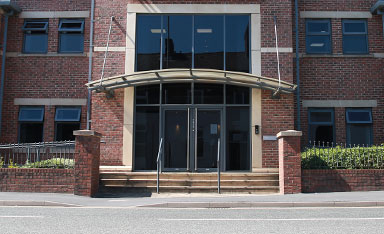Example case: non-compliance of the share buyback procedure
We acted for the buyer on a share purchase. Our legal due diligence exercise uncovered a defective share buyback from some ten years previous. In this particular case, the main defects were a failure to pass the appropriate shareholder resolutions, to make the necessary filings at Companies House and attend to the payment of stamp duty due at the relevant time. It became apparent that the seller’s accountant at the time had simply failed to properly follow the procedure to the letter.
After explaining the risks to our client, the buyer was minded to take a pragmatic view, proceed with the purchase subject to suitable indemnities and other protections within the share sale and purchase agreement.
Why was the original buyback defective?
Where a company undertakes a share buyback it must comply with the rules relating to buybacks contained in the Companies Act 2006. Some of the key requirements include:
- The requirement for the buyback to be made pursuant to a contract approved before the purchase;
- The purchase price must be satisfied in cash and funded out of distributable profits;
- The purchase must be approved by a resolution of the company’s shareholders; and
- Payment must be made at the time the shares are purchased – there is no means by which the purchase price can be deferred; and
- Following the purchase, stamp duty must be paid on the purchase price, and the appropriate filings made at Companies House.
As noted in the example above, the approval of the company’s shareholders was not obtained, and the post-purchase procedural steps were not followed.
What were the consequences?
Whilst the bank’s advisers accepted that the risk was very remote, they took a more cautious view and insisted that the purchase proceeded by way of an asset purchase to eliminate the risk. This had significant ramifications for the buyer, including an extra charge to stamp duty of more than £100,000 and additional professional costs in restructuring the transaction in this way. By switching to an asset sale, the seller was also forced to accept a price reduction by way of contribution, and lost his favourable tax treatment. The accountant’s original oversight in following the procedure proved to be very costly.
This difference in treatment stems from the consequences from failing to strictly comply with the requirements in the Companies Act, which can result in:
- The transaction being treated as unlawful and void (meaning the courts could potentially unravel the buyback transaction and deem that the outgoing shareholder is still the lawful shareholder of the shares); and
- An offence being committed by the company and each of its officers.
In a worst-case scenario, the original ‘phantom’ shareholder will potentially be entitled to claim for lost dividends and a share in the proceeds of sale of the company (which may include an uplift in the company’s value between the time of the alleged buyback and the time of sale). It could even leave the parties open to being held to ransom by the phantom shareholder, who may view this as a golden opportunity to renegotiate the terms of his exit from the business.
The above case highlights the importance of ensuring that the share buyback procedure is followed correctly first time, as failure can prove to be very costly.
For further advice or guidance on the share buyback procedure, please contact Matthew Canfield on 01244 30 5984 or email matthew.canfield@sasdaniels.co.uk.
Example case: non-compliance of the share buyback procedure
We acted for the buyer on a share purchase. Our legal due diligence exercise uncovered a defective share buyback from some ten years previous. In this particular case, the main defects were a failure to pass the appropriate shareholder resolutions, to make the necessary filings at Companies House and attend to the payment of stamp duty due at the relevant time. It became apparent that the seller’s accountant at the time had simply failed to properly follow the procedure to the letter.
After explaining the risks to our client, the buyer was minded to take a pragmatic view, proceed with the purchase subject to suitable indemnities and other protections within the share sale and purchase agreement.
Why was the original buyback defective?
Where a company undertakes a share buyback it must comply with the rules relating to buybacks contained in the Companies Act 2006. Some of the key requirements include:
- The requirement for the buyback to be made pursuant to a contract approved before the purchase;
- The purchase price must be satisfied in cash and funded out of distributable profits;
- The purchase must be approved by a resolution of the company’s shareholders; and
- Payment must be made at the time the shares are purchased – there is no means by which the purchase price can be deferred; and
- Following the purchase, stamp duty must be paid on the purchase price, and the appropriate filings made at Companies House.
As noted in the example above, the approval of the company’s shareholders was not obtained, and the post-purchase procedural steps were not followed.
What were the consequences?
Whilst the bank’s advisers accepted that the risk was very remote, they took a more cautious view and insisted that the purchase proceeded by way of an asset purchase to eliminate the risk. This had significant ramifications for the buyer, including an extra charge to stamp duty of more than £100,000 and additional professional costs in restructuring the transaction in this way. By switching to an asset sale, the seller was also forced to accept a price reduction by way of contribution, and lost his favourable tax treatment. The accountant’s original oversight in following the procedure proved to be very costly.
This difference in treatment stems from the consequences from failing to strictly comply with the requirements in the Companies Act, which can result in:
- The transaction being treated as unlawful and void (meaning the courts could potentially unravel the buyback transaction and deem that the outgoing shareholder is still the lawful shareholder of the shares); and
- An offence being committed by the company and each of its officers.
In a worst-case scenario, the original ‘phantom’ shareholder will potentially be entitled to claim for lost dividends and a share in the proceeds of sale of the company (which may include an uplift in the company’s value between the time of the alleged buyback and the time of sale). It could even leave the parties open to being held to ransom by the phantom shareholder, who may view this as a golden opportunity to renegotiate the terms of his exit from the business.
The above case highlights the importance of ensuring that the share buyback procedure is followed correctly first time, as failure can prove to be very costly.
For further advice or guidance on the share buyback procedure, please contact Matthew Canfield on 01244 30 5984 or email matthew.canfield@sasdaniels.co.uk.




